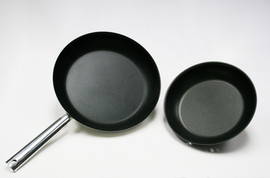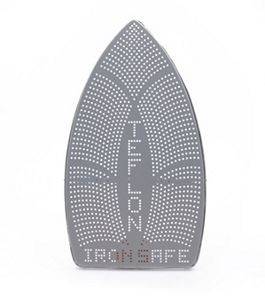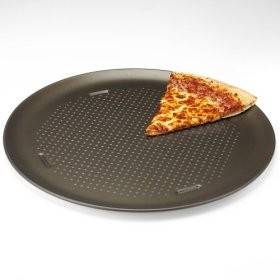 Even the most innovative of technology is not always perfected from the outset. These days, consumers in the market for non-stick cookware can make their purchases with confidence, trusting that their cookware will perform exactly as expected – but that wasn’t always the case. The application of PTFE-based Teflon® coatings in the food processing industry underwent a major evolution in the mid-to-late 1900s, leading to the non-stick products consumers know today.
Even the most innovative of technology is not always perfected from the outset. These days, consumers in the market for non-stick cookware can make their purchases with confidence, trusting that their cookware will perform exactly as expected – but that wasn’t always the case. The application of PTFE-based Teflon® coatings in the food processing industry underwent a major evolution in the mid-to-late 1900s, leading to the non-stick products consumers know today.
Industrial Teflon® coatings were first ingeniously applied to cookware in the late ‘50s by a French engineer named Marc Grégoire, who developed the application for his wife. The development caught on like wildfire in Europe, and was adopted in the US in 1960 after being approved by the FDA. The process was simple: the non-stick material was applied to the aluminum surface, and then cured in an oven. Once fully cured, the item was packed up and sent on its way to consumers’ kitchens – where it often failed. This single-coat, or one-coat, system was ineffective and often caused the material to peel or flake from high heat or abrasion. A more durable solution was desperately needed, and as they say, necessity is the mother of invention.
Industrial Teflon® Coating Services & Methods Evolve
 Due to the lack of adhesion caused by this more rudimentary one-coat system, the industry saw its first important advancement: the development of the primer. The priming material is composed of a special formulation, proprietary to each manufacturer, which helps the non-stick material adhere to the metal substrate. Like an intermediary glue, the primer is a crucial layer that bonds Teflon® coatings to the surface and helps prevent scratching and peeling during normal use. With the first coat maintaining adhesion, this allowed coating applicators to focus on the release properties of the second, topmost coat, leading to a superior grade of nonstick cookware. However, that would not be the last evolution of PTFE coating applications in the food processing industry.
Due to the lack of adhesion caused by this more rudimentary one-coat system, the industry saw its first important advancement: the development of the primer. The priming material is composed of a special formulation, proprietary to each manufacturer, which helps the non-stick material adhere to the metal substrate. Like an intermediary glue, the primer is a crucial layer that bonds Teflon® coatings to the surface and helps prevent scratching and peeling during normal use. With the first coat maintaining adhesion, this allowed coating applicators to focus on the release properties of the second, topmost coat, leading to a superior grade of nonstick cookware. However, that would not be the last evolution of PTFE coating applications in the food processing industry.
Though the two-coat PTFe coating service was undoubtedly an upgrade from the one-coat system, coating applicators knew that there was still room for improvement. Given the opportunity to develop cookware with enhanced reinforcement that was more reliable and long-lasting than previous versions, the three-coat system was developed. This system began with the first coat, the primer, followed by a second, intermediate coat which not only contained stronger wear properties, but also added customizable colors. Finally, the third coat provided exceptional release properties, with a clear or sparkled shine that presented the finish that is now customary in most modern cookware.
 This evolution, which took place from the late ‘60s all the way through the ‘80s, transformed the world of non-stick cookware to become the industrial standard of today. After over 50 years, PTFE coatings are still used in consumer and commercial kitchens, providing excellent non-stick properties. Today, polytetrafluoroethylene nonstick coatings can be two-coat or three-coat (primer/topcoat) systems, and sometimes just one coat. While cookware treated with a one-coat system is still available, all premium cookware undergoes a two- or three-coat process. Three-coat systems are the highest quality coating technology for cookware, and will provide better performance for the user, with greater release and a much longer life than its predecessors.
This evolution, which took place from the late ‘60s all the way through the ‘80s, transformed the world of non-stick cookware to become the industrial standard of today. After over 50 years, PTFE coatings are still used in consumer and commercial kitchens, providing excellent non-stick properties. Today, polytetrafluoroethylene nonstick coatings can be two-coat or three-coat (primer/topcoat) systems, and sometimes just one coat. While cookware treated with a one-coat system is still available, all premium cookware undergoes a two- or three-coat process. Three-coat systems are the highest quality coating technology for cookware, and will provide better performance for the user, with greater release and a much longer life than its predecessors.